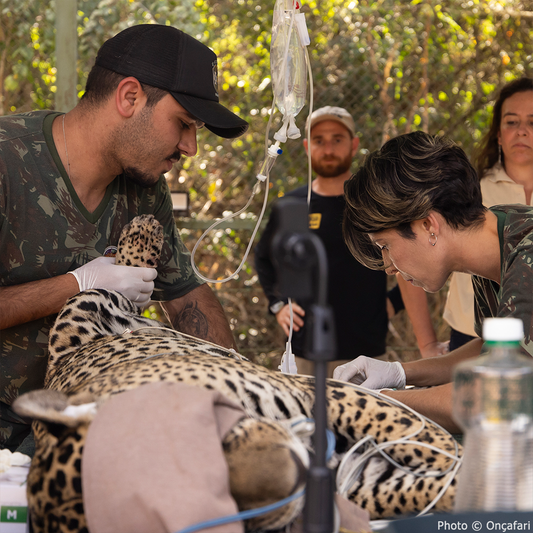Thirty Years Trapped in a Tank: Kshamenk’s Struggle for Freedom
Matthew Russell
Photo: Pexels
Kshamenk, the last captive orca in Latin America, resides in the Mundo Marino oceanarium in Argentina, where he has lived for over 30 years. His story, fraught with controversy, has drawn international attention as activists rally for his release, pointing to the psychological harm captivity inflicts on this highly intelligent and social species.
The debate over Kshamenk's captivity stretches across decades, with animal rights groups pressing for his freedom and the aquarium insisting that his well-being would be jeopardized by reintroduction to the wild.

The Story Behind Kshamenk's Capture
Kshamenk’s capture is one of the most contentious elements of his history. In November 1992, Kshamenk, then just a few years old, was found stranded with three other orcas along the muddy banks of Samborombón Bay on Argentina’s Atlantic coast.
Mundo Marino claimed that the orcas had accidentally beached themselves while hunting fish, and while the others managed to escape, Kshamenk was deemed too weak to survive without human intervention. The aquarium took him in for rehabilitation, which marked the beginning of his life in captivity, ABC News reports. According to the facility, his critical condition justified their decision to keep him for treatment and eventual integration into their exhibits.
However, activists have long disputed this version of events. Many believe Kshamenk was deliberately captured under false pretenses. Critics argue that the aquarium staff may have orchestrated the stranding by using fishing nets, a tactic they allege was not new. Similar accusations surround the capture of other marine animals previously held at Mundo Marino, Patagonia Argentina reports.
These allegations, though unproven, remain central to the campaign for Kshamenk’s release, with advocates pushing for a full investigation into the circumstances of his capture.
@urgentseas UPDATE: This is the very first 2024 video update of Kshamenk, Argentina’s last survivng captive orca. Much like videos of the past, Kshamenk continues to languish in a tiny, ever deteriorating concrete tank at Mundo Marino. Will newly elected President Javier Milei finally release Kshamenk? #FREEDOM #fyp #foryoupage #UrgentSeas #viral #EmptyTheTanks #2024 #FreeKshamenk #SOS ♬ Live in the Spirit - Josué Novais Piano Worship & Instrumental Worship and Prayer
A Life in Isolation
For over two decades, Kshamenk has lived in a tank designed for performances. He shared this space with a female orca named Belen until her death in 2000. Since then, Kshamenk has been the lone orca in the aquarium, performing daily shows for visitors and interacting primarily with bottlenose dolphins, who share his enclosure Dolphin Project notes.
The aquarium describes Kshamenk as active and playful, yet drone footage captured by the activist group UrgentSeas shows a different story. The video, which went viral on TikTok, depicts Kshamenk lying nearly motionless in a small concrete pool, igniting renewed calls for his release CNN reports.
Activists argue that this isolation has caused Kshamenk significant psychological distress. Orcas are highly social animals, known for their complex family structures. Keeping an orca in solitary confinement, especially for such an extended period, is regarded by many as inhumane.
“Solitary confinement is the highest form of torture, and Kshamenk doesn’t deserve that,” UrgentSeas told CNN.
The Push for Freedom
Animal rights groups have intensified their efforts to free Kshamenk. Their campaign centers on the idea that Kshamenk deserves to live out the rest of his years in a seaside sanctuary, where he can experience a more natural environment, free from the confines of a tank. Kshamenk’s supporters point to the successful retirement of other captive orcas to such sanctuaries, arguing that, despite his long captivity, Kshamenk could still enjoy a better quality of life in semi-wild conditions.
According to One Green Planet, activists are even lobbying for the passage of the “Kshamenk Law,” which would ban marine animal shows in Argentina and prohibit the captivity of marine mammals unless it serves rehabilitation and reintegration purposes.
Yet, Mundo Marino remains firm in its stance that Kshamenk’s release would be a death sentence. The aquarium claims that, after so many years in captivity, Kshamenk would not be able to fend for himself in the wild. They argue that without the ability to hunt or join a wild pod, Kshamenk’s survival would be unlikely.
“We are aware of what some activist groups believe, but the reality is that this proposal lacks scientific basis,” Mundo Marino told ABC News.

The Road Ahead
As Kshamenk approaches middle age—he is now 35 years old—time may be running out to secure his release. Orcas in the wild can live up to 90 years, but those in captivity often face shorter lifespans due to stress and confinement-related health issues, CNN reports. Activists hope that public pressure will push the Argentine government to intervene and facilitate Kshamenk’s release. Legal actions are ongoing, and animal rights organizations continue to push for a peaceful resolution that would allow Kshamenk to spend his remaining years in a more natural setting.
While Mundo Marino stands by its decision to keep Kshamenk in captivity, his supporters believe that his story is far from over. The push for Kshamenk’s freedom has gained momentum, and activists are determined not to let him be forgotten.
Whether Kshamenk will ever see the open ocean again remains uncertain, but the fight for his release continues unabated, fueled by the belief that no animal, especially one as intelligent and social as an orca, should live out its life in isolation.
Click below to take action for Kshamenk!
Matthew Russell is a West Michigan native and with a background in journalism, data analysis, cartography and design thinking. He likes to learn new things and solve old problems whenever possible, and enjoys bicycling, spending time with his daughters, and coffee.




















